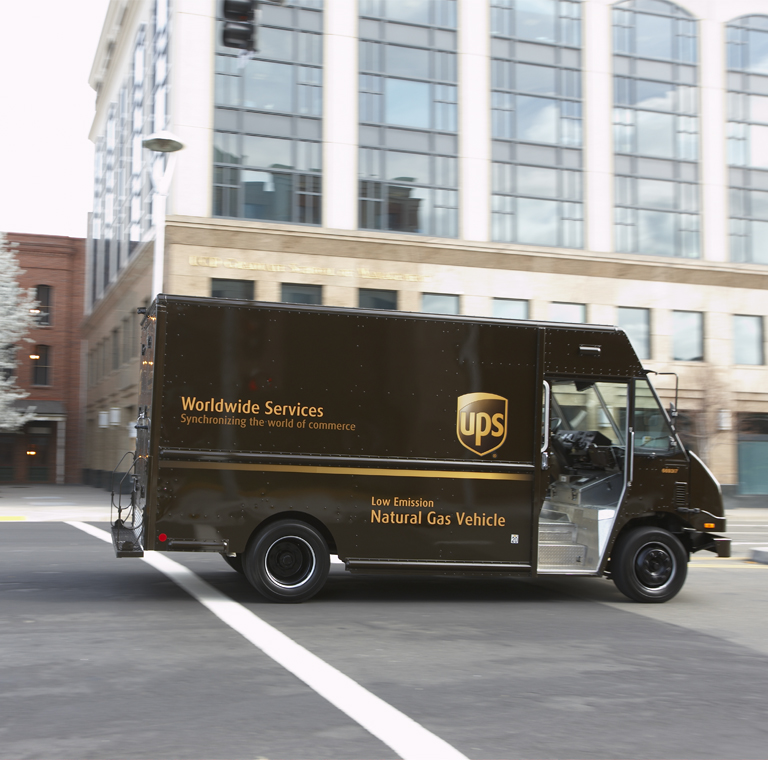Using its experimental “Rolling Laboratory” approach, UPS deploys more than 11,000 low-emission vehicles based on technologies that work best for the needs of each delivery route.
From pedal-powered and electric-assisted bicycles in dense urban areas like London to electric and hybrid-electric vehicles in the U.S., UPS puts sustainability innovation into action, all over the world.
There’s also a great push toward another clean burning and renewable technology – Renewable Natural Gas (RNG). UPS recently made a commitment to purchasing 250 million gallon equivalents of RNG over the next seven years, making the company the largest consumer of RNG in the transportation industry.
“The use of RNG is a very important part of UPS’s strategy to increase alternative fuel consumption to be 40% of total ground fuel purchases by 2025,” said Mike Whitlatch, UPS vice president of global energy and procurement. “We’re using both liquid natural gas (LNG) and compressed natural gas (CNG) as bridging fuels to increase our use of RNG. This will have a measurable impact as RNG yields up to a 90% reduction in lifecycle greenhouse gas emissions when compared to conventional diesel.”
Additionally, UPS recently announced plans to purchase more than 6,000 natural gas-powered trucks. This commitment represents a $450M investment in expanding the company’s alternative fuel and advanced technology vehicle fleet.
Buying these CNG vehicles is super helpful because they can interchangeably use RNG and conventional natural gas. Building the CNG fleet capacity is vital to increasing the company’s use of RNG.
“The world has a trash problem. And the world has an emissions problem. Renewable natural gas, produced naturally from bio sources such as landfills and dairy farms, turns trash into fuel,” said Mike Casteel, UPS director of fleet procurement. “It’s a winning solution that will help UPS to reach our ambitious sustainability goals.”
Those goals include two clearly established targets to accelerate the use of renewable energy like RNG:
- Source 25% of total electricity needs from renewable sources by 2025.
- Source 40% of ground fuel from low carbon or alternative fuels by 2025.
Over the past decade, UPS has invested more than $1 billion in alternative fuel and advanced technology vehicles and fueling stations to help meet its target of reducing absolute greenhouse gas (GHG) emissions by 12% across its global ground operations by 2025 (2015 baseline).
Efficiency and sustainability remain at the core of UPS operations. As a global transportation company, there’s a responsibility to do both. RNG will continue to play an ever larger role in making that happen.
“The world has a trash problem. And the world has an emissions problem. Renewable natural gas, produced naturally from bio sources such as landfills and dairy farms, turns trash into fuel,” said Mike Casteel, UPS director of fleet procurement.


